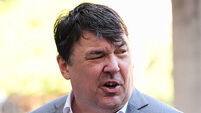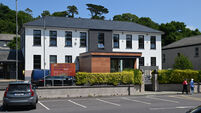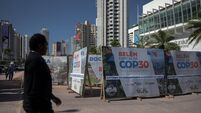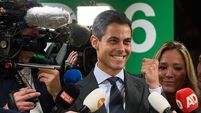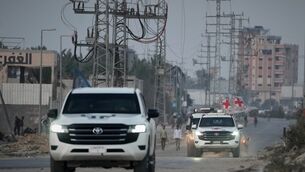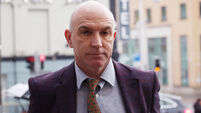Gaza mother tells of sons' deaths while playing on swings
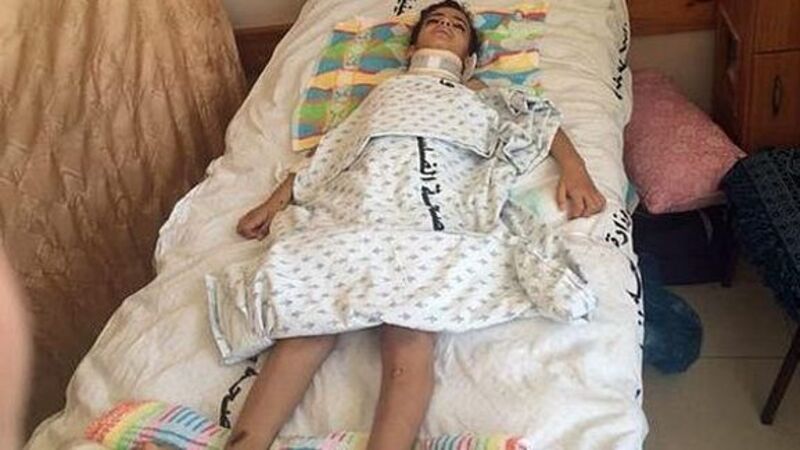
A ceasefire between Israel and Hamas that ended a month of war is holding for a second day, ahead of negotiations in Cairo on a long-term truce and a broader deal for the war-ravaged Gaza Strip.
In the coming days, Egyptian mediators are to shuttle between delegations from both sides to try to work out a deal.
Some details have emerged about the negotiating points of Hamas, the Islamic militant group that controls Gaza, including an internationally funded reconstruction that would be overseen by a Palestinian unity government led by president Mahmoud Abbas.
Meanwhile, the people of Gaza are assessing the destruction to homes and infrastructure caused by Operation Protective Edge.
Up to 500,000 people are homeless and NGOs are warning of the long-term psychological impact on children, many of whom were severely injured, and 400 of whom were killed.
A blood stained shirt is all Sanaa has left of her 9yr son, killed alongside his brother and 12 others @BreakfastNT pic.twitter.com/WRgDJmu6X6
— Shona Murray (@ShonaMurray_) August 6, 2014
Newstalk reporter, Shona Murray, who is in Gaza, spoke to grieving mother Sanaa whose two sons were killed when let allowed them to go outside and play on a swing during what she thought was an earlier ceasefire.
Others have been left to deal with horrific injuries.
6 year old Mahlda, found after 6 hours under rubble. 100% paralysed. Pregnant mother is dead. #Gaza pic.twitter.com/S8aVleB9Vh
— Shona Murray (@ShonaMurray_) August 5, 2014
Meanwhile, Norway is organising a donor conference and Western-backed Mr Abbas is expected to take the lead in overseeing the rebuilding in the coastal territory, which his Fatah movement lost to Hamas in 2007.
The ceasefire is the longest lull in a war that has killed nearly 1,900 Palestinians. Israel has lost 67 people, including three civilians.
The war broke out on July 8 when the Israeli military began bombarding targets in Gaza in an attempt to stop Hamas from launching rockets at Israel. On July 17, Israel sent ground troops into the densely populated territory to destroy underground tunnels it said Hamas had constructed for attacks inside Israel.
But in the weeks leading up to the war, Israeli-Palestinian tensions were soaring in the wake of the June killings of three Israeli teenagers, whose bodies were discovered two weeks after they disappeared in the West Bank.
Israel accused Hamas of being behind the abductions and subsequently carried out a massive ground operation in the West Bank, arresting hundreds of Hamas operatives as part of a manhunt. And in early July, an Arab teenager was abducted and burned alive by Israeli extremists in an apparent revenge attack. Six Jewish Israelis were arrested in that killing.
Today, Israel’s justice ministry confirmed that the suspected mastermind behind the killing of the three Israeli teenagers had been arrested in July. The suspect, Husam al-Qawasmi, allegedly led a three-man cell that Israeli prosecutors say kidnapped and murdered the teenagers. It was not immediately clear if al-Qawasmi has been charged.
In Gaza, people took advantage of the calm to return to their devastated homes and inspect the damage.
Cars and donkey carts loaded with household goods and mattresses filled the streets and queues formed at banks as people waited to withdraw cash from ATMs.
Crews from utility companies worked frantically to repair downed electricity and telephone lines, though with Gaza’s only electrical generating plant badly damaged by an Israeli attack, it may be a long time before anything resembling normal service is restored.
In the devastated Shijaiyah neighbourhood east of Gaza city, carpenter Mahmoud Al Maghani, 44, surveyed the damage to his property.
“I think my workshop was here, but honestly I can’t be sure of that,” he said. “I came yesterday and all I found was rubble.”




